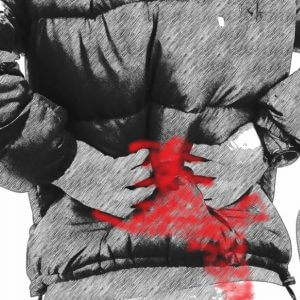Acute Low Back Pain
By Pro B.
December 30, 2021
Back pain, Blog, General Health, Health & Fitness, Injuries and Conditions
0 Comments
Acute Low Back Pain – When to recommend further investigation, or emergency medical referral?
Red Flags for Potential Serious Spinal Pathologies
Possible Cauda Equina Syndrome (CES):
Risk Factors for CES
- History of Herniated disc with neurological signs and symptoms in unilateral or bilateral lower extremities.
- Lumbar spinal stenosis
- Spinal surgery
Symptoms of CES:
- Recent onset of bladder and bowel dysfunction, such as urinary retention, increased frequency, or overflow incontinence, and bowel incontinence, constipation.
- Severe or progressive neurological deficit in the lower extremity.
- Laxity of the anal sphincter. Saddle anesthesia. Perianal/perineal sensory loss.
- Changes in the ability to achieve an erection or ejaculate. Loss of sensation in genitals during sexual intercourse.
- Pain that worsens when supine; severe nighttime pain.
- Major motor weakness in lower extremities like weak knee extension, ankle plantar flexion, dorsiflexion, eversion, etc.
Presentations that increase the probability of acute threatened cauda equine
Back pain with presence of new saddle anesthesia, bladder or bowel disturbance, age < 50 years, unilateral onset progressing to bilateral leg pain, alternating leg pain, presence of new motor weakness, obesity.
Signs/symptoms of Possible spinal fracture
- Severe trauma, such as a high-speed motor vehicle accident, falls from height.
- Minor trauma, direct impact to spine, or even heavy lifting (Risk factors – in the older or potentially osteoporotic patient, use of corticosteroid, history of cancer, history of previous spinal fracture).
- Sudden onset of severe low back pain, thoracic pain post-trauma.
- Spinal tenderness – midline bony tenderness
- Onset of spinal deformity post-trauma
- Contusion or abrasion
Possible Spinal Malignancy or Infection
- History of cancer.
- Severe pain that may become progressive and constant.
- Night pain.
- Constitutional symptoms, such as unexplained fever or chills or unexplained weight loss.
- Risk factors for spinal infection: underlying conditions such as osteomyelitis; recent bacterial infection (e.g. urinary tract infection); IV drug use; or immune suppression (from steroids, transplant, or HIV), spinal surgery/procedures.
- Sudden back pain with spinal tenderness (especially with a history of osteoporosis, cancer, steroid use)
- Unfamiliar low back pain
- Altered sensation from trunk down (non-dermatomal and complaints of strange feelings in the legs)
- Neurological signs
References:
https://www.jospt.org/doi/10.2519/jospt.2020.9971
https://pubmed.ncbi.nlm.nih.gov/21056162/
Related Posts

Rating of Perceived Exertion – RPE Scale

Perspective: Efficacy of spinal manipulative therapy in the treatment of symptomatic lumbar disc herniation

